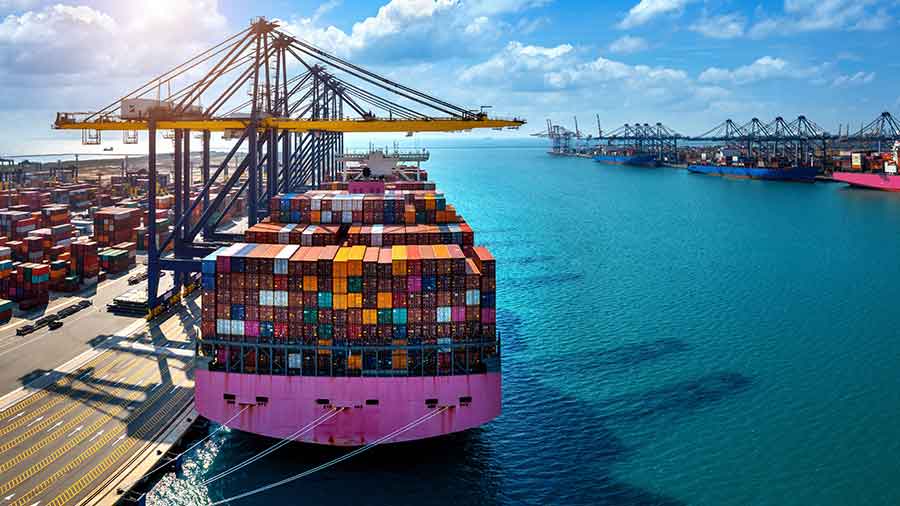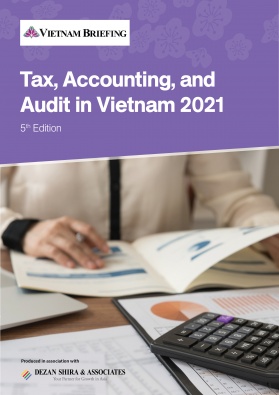COP26 and Climate Change: Vietnam’s Commitment to Reducing Emissions
This article is part of our partnership with the Green Economy Forum & Exhibition 2022, organized by EuroCham Vietnam, supported by Dezan & Associates Vietnam.
Vietnam Briefing discusses the COP26 and Vietnam’s climate action plan including its commitment to achieve net-zero carbon emissions by 2050.
The UK in partnership with Italy is hosting the 26th session of the Conference of the Parties (COP26) to the United Nations Framework Convention on Climate Change (UNFCCC) from October 31 to November 12, 2021, in Glasgow. COP26 is expected to strengthen the global response to the threat of climate change by accelerating a climate action plan that has international consensus.
The primary agenda will be to establish tangible actions against climate change. Vietnam has also committed itself on achieving the target of net-zero carbon emissions by 2050.
COP26 follows the assessment report on Earth’s climate published by the Intergovernmental Panel on Climate Change (IPCC). This report highlights various climate change-induced events like heat waves, droughts, extreme rainfall, and sea-level rise in the coming decades.
What is the Conference of Parties (COP)?
The COP comes under the UNFCCC, which was established in 1994, to work towards the stabilization of greenhouse gas concentrations in the atmosphere. The UNFCCC has 198 member states, including Vietnam, India, the US, and China. The first COP was held in 1995, and since then 25 such conferences have been held.
At COP3 in 1997 in Kyoto, Japan, the Kyoto Protocol was adopted where significant decisions were made regarding the reduction of greenhouse gas emissions by member states. COP21, which was held in 2015 in France, was another milestone conference where the Paris Accord was signed to set a target for limiting global warming to below two degrees Celsius – preferably to 1.5 degrees Celsius – compared to pre-industrial levels.
The member states are expected to fulfill responsibilities like formulating measures to mitigate climate change, cooperating in preparing for adaptation measures to deal with the impact of climate change, as well preparing public awareness material to promote education and training material related to combatting climate change.
What is on the agenda at COP26?
According to UNFCCC, COP26 aims to work towards the following goals:
- Ensure global net-zero by 2050 and keep the target of 1.5 degrees Celsius within reach: The UNFCCC recommends that countries fast-track the phase-out of coal, restrain deforestation, accelerate the transition to electric vehicles, and encourage investment in renewables to meet this goal.
- Bring in adaptation measures to protect communities and natural habitats: It is envisaged that countries must work together to safeguard and restore ecosystems and build resilient systems, infrastructure, and agriculture to avoid loss of homes, livelihoods, and lives.
- Mobilize climate finance to enable member states to achieve their climate goals: The UNFCCC proposes that all countries must have National Adaptation Plans in place and must produce Adaptation Communications sharing best practices to help turn ambition into action.
- Coordination to finalize Paris Rulebook: The leaders and representatives of member states must work together in coordination to frame a detailed list of rules that will help fulfill the Paris Agreement.
Vietnam’s climate action commitment at COP26
Vietnam’s Prime Minister Pham Minh Chinh stated that Vietnam will reach its net-zero carbon emission target by 2050 and called for fairness and justice in climate change issues. Chinh reiterated that developed countries should share in the country’s difficulties and offer assistance in HR, national governance on sustainable development and provide Vietnam with preferential green finance and technology.
Vietnam also strived to introduce stronger measures to reduce greenhouse gas emissions on its own abilities as well as international support in terms of finance and technology transfer. It also vowed to continue implementing goals as stated in the Paris Agreement.
In line with COP26, Vietnam made a commitment to stop deforestation by 2030 and phase out coal-fueled power generation by 2040. Other developed countries have vowed to do so by 2030.
Vietnam has targets to reduce greenhouse gas (GHG) emissions by 9 percent with domestic resources and 27 percent with international support by 2030 as per the Nationally Determined Contribution (NDC).
The country has been one of the hardest-hit countries by climate change and is working to build up its climate resilience planning and economic development in line with international standards.
Rising sea levels key concern for Vietnam
Asia is home to 13 of the 20 cities around the world that are most vulnerable to flooding, including in places such as China, India, and Vietnam.
Vietnam had earlier reiterated the threat of rising sea levels due to climate change especially in the most vulnerable regions in South Vietnam, home to more than 20 million people. The region also produces almost half the country’s rice harvest. A significant amount of land is periodically affected by flooding resulting in damage to crops and people’s livelihoods.
Ho Chi Minh City itself is regularly prone to flooding. The government’s plan is to develop the city as a financial center and a smart city by 2025. A report by McKinsey however states that the annual flooding in the city may cost about US$1.3 billion a year, mostly from damage to real estate. This trend is likely to increase as costs related to floods may increase faster than economic activity.
Vietnam has plans to increase ecological farming and adopt new technologies. The Ministry of Planning and Investment (MPI) is also developing a master plan for the Mekong Delta region for 2021 to 2030 with a vision for 2050.
Vietnam’s goals on right track but implementation will be key
Vietnam is also heavily dependent on coal and may double the amount of coal-fired electric generation by 2030 as per a draft report seen by Reuters. Nevertheless, the commitment to cut coal by 2030 for developed and by 2040 for developing countries is promising. Government officials have stated that they will double the installed wind and solar power generation capacity to 31-38 gigawatts by 2030.
Given these factors, its imperative for Vietnam to continue imposing measures to increase sustainable development while also asking international partners to share its goals on climate change. Action on these goals will require a significant amount of resources from the government as well private sectors to ensure that Vietnam is able to follow through on its commitments. Vietnam’s commitment on climate change goals as well as commitments by other countries will have a significant impact on future economic growth.
With Vietnam looking to bounce back and revive economic activity after the fourth wave, its commitments on climate issues will be challenging but needed and beneficial in the long term.
About Us
Vietnam Briefing is produced by Dezan Shira & Associates. The firm assists foreign investors throughout Asia from offices across the world, including in Hanoi, Ho Chi Minh City, and Da Nang. Readers may write to vietnam@dezshira.com for more support on doing business in Vietnam.
We also maintain offices or have alliance partners assisting foreign investors in Indonesia, India, Singapore, The Philippines, Malaysia, Thailand, Italy, Germany, and the United States, in addition to practices in Bangladesh and Russia.
- Previous Article Vietnam Issues VAT Rate Reduction for Imported Medical Equipment: Circular 43
- Next Article Vietnam’s Thai Binh Province: Red River Delta’s Attractive Investment Destination
































